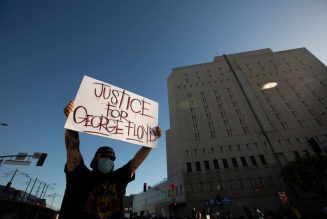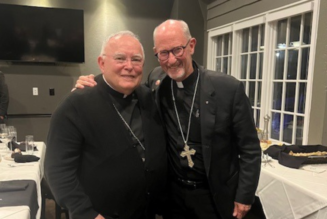
Here’s a simple fact: Life is brief. We have limited time in the world. So how should we use it? Before answering, consider that word should. Should is a modest, single syllable with immodestly thick implications. It suggests that different paths forward in life exist. Some are right, and some are wrong. Thus our choices have meaning. They also have consequences.
J. R. R. Tolkien pondered these things in 1916 as he lay in a hospital bed with trench fever. Sent home from the battlefield in France to recover from his illness in England, he’d experienced the carnage of the First World War firsthand. He knew the sight and smell of bodies. Friends had already died in combat. Death, and the questions it raised about the kind of life worth living, left a deep mark on his thinking. In his letters he later noted that, while many people assumed that his masterwork of fantasy, The Lord of the Rings, was about the struggle of good and evil, its real theme was the meaning of death and immortality.
Death, Tolkien wrote, is not an enemy; at least, not for the good man. Instead, he saw a “hideous peril [in] confusing true ‘immortality’ with limitless serial longevity.” For Tolkien’s elves, their unending lives were as much a curse as a gift. Unable to die, they were tied inescapably to Middle Earth. They envied man his ability to die and be liberated to mysterious new life. Human existence, precisely because of its fragility, had kernels of both tragedy and exaltation that elvish life lacked.
The weight of Tolkien’s concerns meant that nothing saccharine or weak survived for long in his storytelling. As he made clear in his great essay “On Fairy Stories,” Tolkien’s interest in Fairie—the realm of “enchantment and ever-present peril; [of] both joy and sorrow as sharp as swords” —was its power as a magical setting for the pursuit of truth through the imagined adventures of men. For Tolkien, Fairie had ambiguous borders and rarefied air. But it was serious business. Passports were limited. Certain characters belonged. Others, less so. Little Red Riding Hood might qualify for citizenship. The Three Little Pigs did not, and were promptly deported to the Land of the Beast Fable.
Tolkien disliked overtly “catechetical” fiction. But he knew, of course, that nearly all fairy stories, folk tales, and beast fables contained lessons; lessons that they shared directly or indirectly while they entertained. They differed in many ways, but mainly in their subtlety and skill at creating an utterly absorbing alternate reality. And because human reality since the Fall has always had moments of great suffering and wickedness—bad things can happen—early versions of many tales could be alarmingly fierce.
In one version of Cinderella, for example, the evil stepsisters are ultimately blinded as punishment. An early version of Little Red Riding Hood broods with cannibalism and implied rape; the original tale was so graphic and frightening that Charles Perrault, the father of the fairy tale genre, had to launder it for inclusion in his 1697 collection of fables.
As for the Three Little Pigs, the 1933 Disney cartoon of the story is rife with sunny revisionism. All of the pigs survive, and the wolf runs away after scalding his backside. But in the tale’s early versions, the two lazy, foolish pigs—who built their homes from straw and sticks—get torn to pieces and gobbled down by the ravenously malignant Big Bad Wolf. The wolf in turn is finished off by Piggie No. 3, the one with the brains, the work ethic, and the house of bricks. The pig first outwits the wolf, then sets a trap, then boils him alive, and then eats him for dinner. The point of many old fables was to teach the young that the world can be a cruel and dangerous place, held in check with hard justice, and demanding strong, prudent people. Given the survival of such stories over generations, they clearly worked. Children listened and learned.
In medieval Europe, wolves were anything but a fairy tale. Wolf packs were common and very real. Forests were heavy with their menace. But that was then. This is now. Today the authentic Age of Fairie has passed. Fantasy—once Tolkien’s untamed “Perilous Realm” of virgin beauty and transcendent longings—is now a suburbanized colony of mass media commerce. And the Big Bad Wolf is just another victim of social science, vivisected down to his psychosexual roots.
Appearances can be deceiving, though. Wildlife adapts. The Big Bad Wolf may be gone. But a number of his more adroit lupine cousins ran nations in the last century with impressive if unhappy results. Others do today. Still others figure prominently in our corporate, scientific, and academic life, in our entertainment and news media, where their experience in the storytelling industry really pays off, and of course in Washington, in both our major parties. Piggie No. 3 made a wise investment in bricks. I would simply add that today, when managing our knee-deep flow of political effluence has become such a crisis, we need to build our homes up—vertically—as well as strong. We need pillars; pillars to support a life worth living. So allow me to suggest four of them.
Four Pillars
For thirty-two years of my work life, I had four small frames on my office wall. Each held a quotation. I read them in the morning, between tasks, and every night before leaving for home. They were the sinews of my day. In the end, I passed them along to a friend younger and smarter than myself. I didn’t need them any more. They were branded on the brain.
The first frame held words from Alexander Solzhenitsyn: “Gradually it became clear to me that the line separating good and evil runs not through states, nor between classes, nor even between political parties, but right through the center of each human heart. And every human heart.” There is no such thing as class guilt or race guilt. There is only the virtue or wickedness of our own choices. We are each of us free. And because we are free, we’re each of us accountable for our actions. Circumstances may explain or modify our responsibility. They don’t erase it.
The second frame held words from Léon Bloy: “Man has places in his heart which do not yet exist; and into them enters suffering, that they may have existence.” No one looks for suffering, but sooner or later, no one escapes it. Suffering either breaks us, or makes us into something more and better than what we were. We’re not powerless. We can choose what we do with it.
In the third frame was a quotation from François Mauriac: “Anyone who has truly known God can never be cured of him.” To know God—not to “know about” God, but to know him—is to love him, the source of all love. And all such love is incurable. We think otherwise only because we love so poorly and selfishly. We live in a God-haunted world. We knew him once, we loved him once, and we’ve spent centuries trying to forget and escape him. It doesn’t work. It never works, as Augustine saw ages ago. We can only hide.
The last frame held a quotation from that great Chinese theologian whose regime has been so politely reconsidered in recent months by the Holy See: Mao Zedong. Yes, Mao was an exceptionally big and bad wolf, not a saint. Nobody’s perfect. But as a strategist, he had few peers. And for Christians with a very long tradition of spiritual warfare, his words bear some thought: “Weapons are an important factor in war, but not the decisive factor; it is people, not things, that are decisive.” Exactly: People, not things, are decisive.
The beauty, the solace, and the joy of Christianity is friendship: friendship with God, and friendship with one another. The faith and friendship of Christians transformed the world once. They can do so again. Christianity is, after all, the greatest of all great stories; the greatest story ever told. But of course, we need to actually believe in Jesus Christ; really, passionately believe. And then we need to incarnate our faith, together, in our actions.
These have been my pillars. Many other good ones exist for people to choose from. But it’s hard for me to imagine the survival of anyone’s reason and sanity without at least something to lift and hold us, even for a little while, above the sheer wolfish hatreds of our times. And I doubt that I’m alone in that feeling.
Which brings us back to a simple fact: We have limited time. So how should we use it? What will our lives mean when we finally look back on them? Each of our personal stories, at least in this world, will end. Death, no matter how remote we wish it to be, raises questions about the kind of life worth pursuing, questions we cannot evade. Like it or not, we inevitably choose a path, either by our love or refusal to love, by our actions or our refusals to act.
We live in an age of men with mechanical minds and clockwork hearts; an age, in Tolkien’s view, “of improved means to deteriorated ends.” We can be part of that. That’s one path. But there’s another.
“The Gospels,” wrote Tolkien, “contain a fairy story, or a story of a larger kind which embraces all the essence of fairy stories.” But this story, this one unexpected, undeserved, spectacular story, is neither fable nor legend. It has flesh and blood, hunger and thirst, happiness and suffering; it really happened; it entered the everyday world. “The Birth of Christ,” Tolkien wrote, “is the eucatastrophe” —the great and jubilant ending— “of Man’s history. . . . This story begins and ends in joy. It has pre-eminently the ‘inner consistency of reality.’” This story, said Tolkien, “is supreme, and it is true.”
And it’s worth, I’d suggest, giving our lives to.








